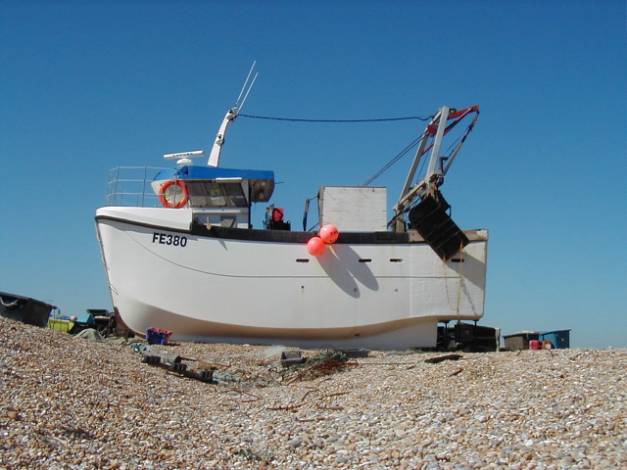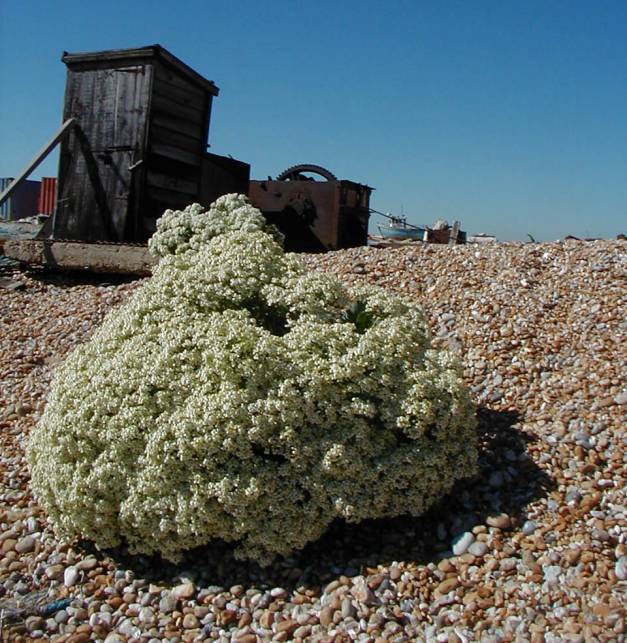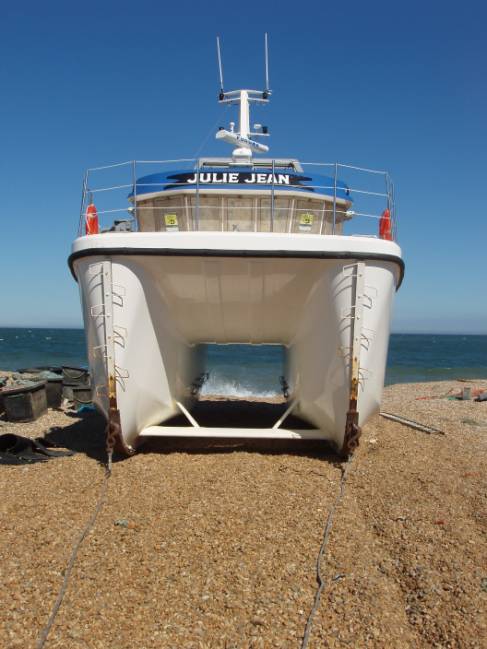
We arrived at the desolation. Actually, Dungeness is far from desolate, but it is predominately a huge shingle spit and as such can look largely devoid of life. But there is even human life here and not just visitors. A rather shantytown collection of homes line the road which leads to the Ness. Many have wonderful gardens but in many, somewhat mineral items have been used to provide colour, rather than plants. I love the ingenuity that people show.
We parked and walked.

Was this a fishing hut? This one is well out on the beach away from the actual road, although it does have a tarmac track to it. A group of students were on this route, planning and taking bizarre photographs. I’d like to have seen the results.

The cabbage strewn beach. Just how do these plants find nutrients in the shingle? It must be hard but they seem to thrive.

More plants, and in the background there’s an expensive fishing boat up on the shingle.

This one is Folkestone registered and we were told it cost something like £100 000. We were also told that the fishing fraternity put up with the extreme inconvenience of the beach method of landing because the harbour charges are so high. Rye was specifically mentioned – but then I was talking to a chap with a Rye registered boat. I expect Folkestone is every bit as pricey.

This is the standard launcher and hauler out of the water at Dungeness. Our Rye friend also had a stationary winch, but his old dozer – much more archaic looking than this one, he felt was much easier to start so he didn’t use his winch.

Fishing doesn’t half create rubbish. All around the boats were discarded floats, ropes, chains, nets, boxes and so on. It is, I suppose, a mess, but it is also an interesting mess.


Winch-house, boats and a sea cabbage – they are all part of the Dungeness scene.

Julie Jean is a catamaran fishing boat and comes complete with skids for coping with that haul up the beach.